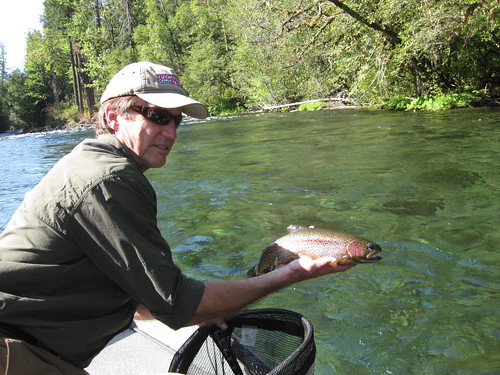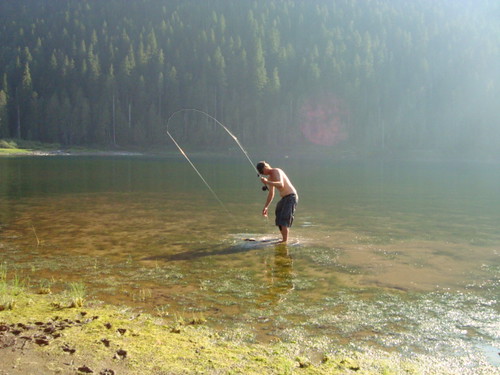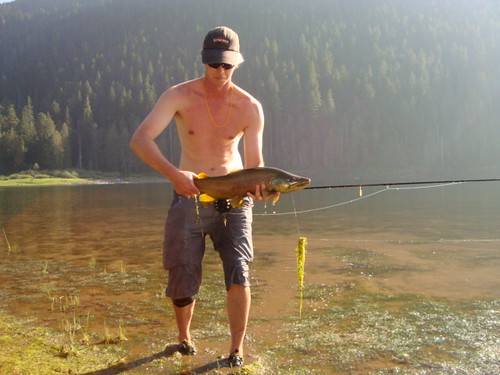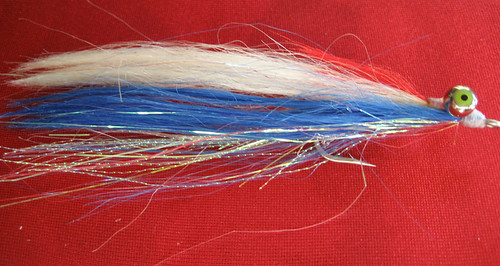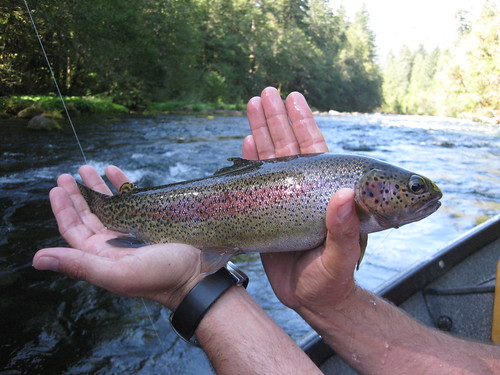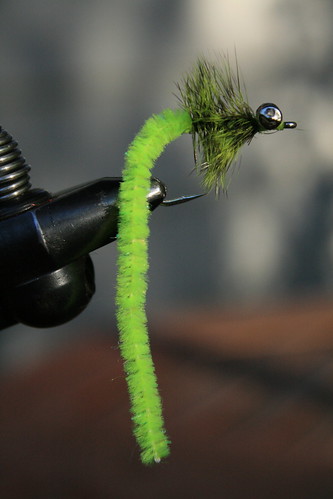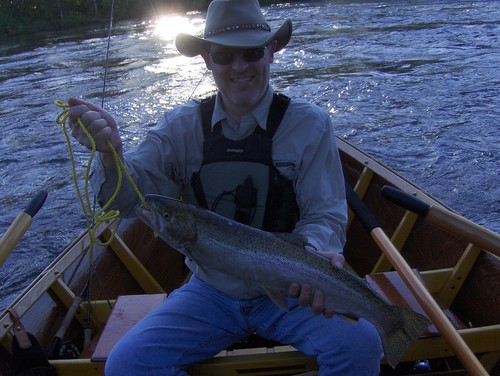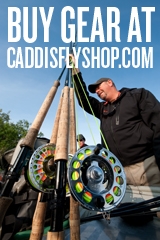My stomach is still reeling, jaw sore from clenching my teeth with anxiety. Happy to be home in Eugene, on dry land, never to set foot in Curley’s Fiberglass Pig #15 again.
I traveled north last weekend to the Strait of Juan de Fuca to fish out of a rented boat from the town of Sekiu on the Olympic Peninsula with my pal Julian from Seattle. Neither of us had fished the Strait before.
Our first day on the water was a half-day, and we decided to spend it fly fishing for rockfish and lingcod. We set out in our little rental boat, headed west toward more favorable fishing regulations in Marine Zone 4 and Neah Bay. Once we reached Marine Zone 4, the mouth of the Sekiu River, we spotted massive rocks jutting out of the water in the distance.
Far out on the horizon, Seal and Sail Rock seemed like a perfect place to find bottomfish glory. It was a long haul, nearly 15 miles from Clallam Bay we later found out, but it seemed worth it. The rocks were surrounded by kelp forests and the water dropped off to thirty feet deep.
There were lots of gray whales nearby, and they seemed to be rubbing themselves against the rocks. They were literally right next to shore. The spray from spouting whales dotted the shoreline every few hundred yards in either direction.

That may have explained why the rockfish bite was off – a herd of forty-foot long whales rubbing their barnacles off en-masse against your house would be unsettling.
When the gas gage started to sag toward the halfway point, we decided to turn back, but found it tough going. The wind had shifted, and we were headed into a nasty chop.
At this point it would be a good idea to describe our boat – dubbed Curley’s Fiberglass Pig #15. Imagine a 55-gallon drum, cut in half vertically, with a small unreliable outboard clamped to the back. Or a cardboard box shellacked with some polyurethane. The thing had a wide, flat bottom with hardly a keel, low sides and no real V-shape in front. It didn’t slice through waves, as much as it tried to push through them. It veered out of control randomly – a sensation like riding a bike on an iced pond.
On the way back, the little 15-horse engine strained to push the boat up the swells. Eventually it started to smoke and died. That’s when the fear got on top of me.
We were miles from the marina, facing a very likely fuel management mistake, and before we even ran out of gas, the damned thing decided to give up. I lost it. I put the oars in the locks and started paddling toward shoreline without making any headway. The oars were in worse shape than the boat and I couldn’t even keep the bow facing the waves, let alone make any ground. At that point I was ready to take my chances with the life vest and abandon ship. That’s how much the fear had gotten on top of me. I was going to jump out. But Julian snapped me out of it and nursed the engine back into relative cooperation.
Obviously we made it back or you wouldn’t be reading this, but it was tight. Lesson learned – the Curley’s Fiberglass Pig’s max distance is probably three miles, not fifteen.
That night we tried to toast to our survival at the Spring Tavern down the street, but it didn’t serve hard liquor and Two and a Half Men blared on the TV. The Spring Tavern is where good times go to die. Forewarned is forearmed – pack your own party for Sekiu folks.
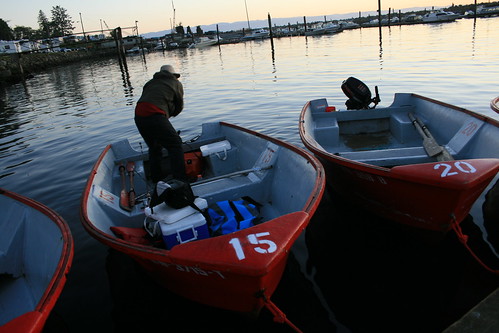
The next day was the end-of-season coho derby and we joined the armada of boats at dawn, headed out of Clallam Bay toward Canada.
I’m no expert at salmon trolling, but somehow Julian and I both hooked up with two of the biggest coho salmon I’d seen taken that week. Julian trolled this bastardized rig – kind of a hodge podge of stuff I found at Two Brothers Tackle with a pink hoochie on the back. I just trolled the pink hoochie on my ten-weight with a sinking head. The proprietor of our motel told us we had fish we could be proud of, but we’d have had to have been trolling our hooks backwards to get skunked out there on Saturday.

After lunch we decided to put our salmon on ice and to chase rockfish close to home. We found some kelp greenling on a rocky point and picked up some nice specimens on purple and white clouser minnows. The bright red fish held close to the kelp forests and it paid to drop a fly down into pockets in the kelp. We had about an hour of hot action, then nada till dinner.

Day two was such a bonanza, we thought we couldn’t lose on Day Three. But it’s easy to go buzzing out of the marina like King Kong and come back with your tail between your legs.

The swell was big in the morning, but manageable. I’d guess it at 8-feet, but smooth rolling waves coming from the west. We trolled out into the maelstrom of boats with our hoochies dancing behind us. But things got hairy fast.
For one, we really couldn’t control the line we were trying to stay on for a troll. We would lose track of big boats in the troughs of the waves, and find out we were right on top of each other. On top of that, some really big tan-colored objects were flying underneath the boat, occasionally smacking Julian’s rig. These were apparently, giant Humboldt Squid.

To top it off, the wind kicked up out of the east and we had wind-waves hitting us from the other direction, stacking up on top of the already huge swells. At a certain point, it looked like the swells were going to swamp the boat, coming over the low, wide bow. And I could tell from looking at our vessel, the only thing keeping it afloat was surface tension. Five gallons of water over the side and we’d have gone down like the Titanic.
The fear got up on top of me again. This time worse than before. I wasn’t sure if it was smarter to haul ass in before things got any worse, or take it easy and get in safe. Eventually fear won out and we tore-ass in with hundreds of feet of fly line and diver rigs braided together, hanging off our rods out the back of the boat. Apparently lots of other boaters had the same idea and the wakes from the dozens of fleeing boats nearly swamped us in the marina.
We’d only spent a few hours out there, but I was done with Curley’s Fiberglass Pig. We hung it up by midmorning and took Curley back his key.
After that, we decided to drive to Neah Bay, to see the town, a Makah Village on the tip of the Peninsula. The Wikipedia write up on Neah Bay mentions that it had 792 residents in the 2000 census and it is a bustling bottom fishing destination in the summer. It doesn’t mention the soul-crushing look of the place, the gutted and abandoned buildings, rusting junk piles.
We pulled in and the town looked dead. The bottom fishing season had wrapped up the week before apparently and not a soul stirred in the marina or road through town. About three-quarters of the way down the main drag, we came across the huge and bloody body of a Humboldt Squid, splayed out in the road with its giant eye looking up at us. The scene was very David Lynch – and the squid’s eye the size of a baseball felt like a warning. So we turned tail and left Neah Bay behind.
-MS









